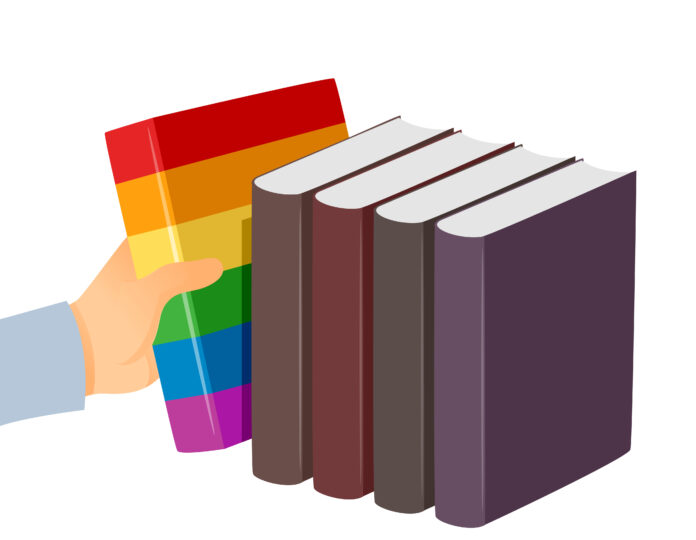LGBTQ History Month is upon us, and the past 12 months have seen some great new kids’ books about LGBTQ history, including several elementary-grade biographies of both well-known and lesser-known figures. For middle-graders, there’s a terrific new overview of LGBTQ history, a biography of a transgender icon and two works of historical fiction.
Elementary Grade
“The Mother of a Movement: Jeanne Manford — Ally, Activist, and Founder of PFLAG,” by Rob Sanders, illustrated by Sam Kalda (Magination Press). A moving biography of Manford, as Sanders powerfully wields repetition and rhythm to show how a mother’s love can stand up against forces of hate and change the world for the better.
“Dare to Question: Carrie Chapman Catt’s Voice for the Vote,” by Jasmine A. Stirling, illustrated by Udayana Lugo (Union Square Kids). Catt was president of the National American Woman Suffrage Association during the critical years immediately before and during passage of the 19th Amendment, which granted women the right to vote. This lively biography includes recognition of her “partner for life,” Mary Garrett Hay.
“Good Books for Bad Children: The Genius of Ursula Nordstrom,” by Beth Kephart, illustrated by Chloe Bristol (Anne Schwartz Books). An upbeat biography of Nordstrom, the transformational editor of many classic children’s books, including “Where the Wild Things Are,” “Goodnight Moon,” “Charlotte’s Web,” and “Harriet the Spy.” When some people told her that certain stories were “too naughty, funny, or scary” for children, the book relates, she asserted, “There are all kinds of children who need all kinds of books” — a timely reminder. In her retirement, we learn, too, “she lived with Mary Griffith, the woman she loved.”
“No Horses in the House! The Audacious Life of Artist Rosa Bonheur,” by Mireille Messier, illustrated by Anna Bron (Orca). A lighthearted and lightly fictionalized biography of 19th-century French artist Rosa Bonheur. The focus here is on Bonheur’s artistic development and early rejection of traditional roles (and dress) for women, but her “lifelong partner” of 40 years, Nathalie Micas, is mentioned briefly in a timeline at the end.
“A Storm of Horses: The Story of Artist Rosa Bonheur,” written and illustrated by Ruth Sanderson (Crocodile Books), looks at the artist’s life with a little more detail and a little less whimsicality than the above; each will appeal to different readers. The book states that Bonheur “lived with a beloved lifelong partner, Nathalie Micas” and that “Many believe that Rosa was a lesbian, though she never spoke publicly about her preferences.” The use of the dated term “preferences” is unfortunate, but otherwise, this is a thoughtful look at Bonheur’s life.
“A Song for the Unsung: Bayard Rustin, the Man Behind the 1963 March on Washington,” by Carole Boston Weatherford and Rob Sanders, illustrated by Byron McCray (Henry Holt). A lyrical testament to Black, gay civil rights leader Rustin. The book not only tells of moments in his life, but also suggests relevant songs on each spread, drawn from the Black civil rights movement and Black spirituals, to help readers connect with the story in multiple ways.
“Unstoppable: How Bayard Rustin Organized the 1963 March on Washington,” by Michael G. Long, illustrated by Bea Jackson (Little Bee). Another informative and intersectional look at the life and significance of Rustin, who “was proud of who he was — Black, gay, and an activist for peace.”
“Hope for Ryan White,” by Dano Moreno, illustrated by Hannah Abbo (Albert Whitman). In 1994, 13-year-old White was diagnosed with AIDS, after contracting it via a blood transfusion. He was not gay, but was the victim of homophobia-fueled fear of AIDS, and fought a headline battle to keep attending school. The book frames its difficult subject matter with a sensitive eye toward its young audience.
Middle Grade
“A Child’s Introduction to Pride: The Inspirational History and Culture of the LGBTQIA+ Community,” by Sarah Prager, illustrated by Caitlin O’Dwyer (Black Dog & Leventhal). An engaging, systematic look at LGBTQ history and concepts from ancient times to the present. The book balances summaries of key events, movements, and people with thematic overviews of LGBTQIA+ contributions to the world and a look at successes and challenges today. There’s also a pull-out poster with a timeline.
“Hispanic Star: Sylvia Rivera,” by Claudia Romo Edelman and J. Gia Loving, illustrated by Cheyne Gallarde (Roaring Brook Press). An informative and welcome middle-grade biography of Stonewall participant and transgender icon Rivera. Content warning: Mention of her mother’s death by suicide, and of the abusive behavior of her half-sister’s father. Also available in Spanish.
“Flor Fights Back: A Stonewall Riots Survival Story,” by Joy Michael Ellison, illustrated by Francesca Ficorilli (Stone Arch Books). A novel of historical fiction with a young trans protagonist of color, set in New York City at the time of the Stonewall Riots. Even purely nonfiction books about Stonewall for this age group rarely convey the happenings and significance of the event so clearly and with such impact.
“World Made of Glass,” by Ami Polonsky (Little, Brown). Set in 1987 at the height of the U.S. AIDS epidemic, this historical novel is told from the perspective of seventh-grader Iris Cohen, whose dad came out as gay a year ago. When he dies from complications of AIDS, Iris grapples with grief and a deepening awareness of the bias and fear surrounding the disease. She becomes involved with the burgeoning ACT UP group, and the book takes a nuanced look at the birth pangs of this social justice movement, while also thoughtfully exploring one girl’s response to a personal tragedy.
